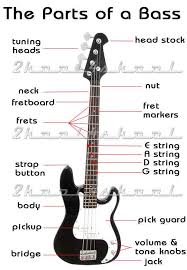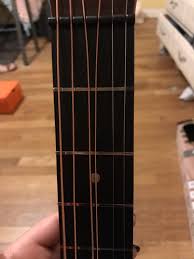The Essential Guide to Bass Guitar Strings
When it comes to playing the bass guitar, one of the most crucial components that can significantly impact your sound is the choice of strings. Bass guitar strings come in various materials, gauges, and constructions, each offering a unique tone and feel. Here is a comprehensive guide to help you navigate the world of bass guitar strings.
Materials
Bass guitar strings are commonly made from four primary materials:
- Steel: Steel strings are known for their bright and punchy tone, making them popular among rock and metal bassists.
- Nickel: Nickel-plated steel strings offer a warmer tone compared to pure steel strings, making them versatile for various music genres.
- Stainless Steel: Stainless steel strings are durable and resistant to corrosion, providing a bright and clear sound.
- Flatwound: Flatwound strings have a smooth surface and produce a mellow tone ideal for jazz and vintage bass sounds.
Gauges
The gauge of a bass guitar string refers to its thickness. Lighter gauge strings are easier to play but may sacrifice some low-end depth, while heavier gauge strings offer more sustain and low-end power but require stronger fingers to play comfortably.
Common bass guitar string gauges include light (40-95), medium (45-100), heavy (50-110), and extra-heavy (55-115).
Roundwound vs Flatwound
Bass guitar strings also come in different winding styles:
- Roundwound: Roundwound strings have a textured surface that provides brightness and clarity, making them suitable for slap bass techniques.
- Flatwound: Flatwound strings have a smooth surface that produces a warm, mellow tone with reduced finger noise, perfect for traditional jazz or blues styles.
Maintenance Tips
To ensure your bass guitar strings last longer and maintain their optimal tone, consider these maintenance tips:
- Clean your strings regularly with a soft cloth to remove dirt and oils that can degrade the string’s lifespan.
- Avoid playing with dirty or sweaty hands as it can accelerate corrosion on the strings.
- Use string lubricants or conditioners to keep the strings feeling smooth and reduce friction during playing.
- Store your bass guitar in a controlled environment with stable humidity levels to prevent rusting on metal strings.
By understanding the different types of bass guitar strings available and how they can affect your playing experience, you can make an informed decision when selecting the right set for your musical style and preferences. Experimenting with various string materials, gauges, and winding styles can help you discover the perfect combination that enhances your sound and inspires your creativity.
Essential Tips for Maintaining and Optimising Your Bass Guitar Strings
- Change your bass guitar strings regularly to maintain a fresh tone.
- Experiment with different types of bass guitar strings to find the sound that suits your playing style.
- Clean your bass guitar strings after playing to prolong their lifespan and maintain their tone quality.
- Stretch new bass guitar strings properly after installation to prevent tuning instability.
- Adjust the action of your bass guitar if you change string gauges to ensure proper playability.
- Use a tuner when replacing bass guitar strings to achieve accurate tuning for each string.
- Consider the material of the bass guitar strings (e.g. nickel, stainless steel) for different tonal characteristics.
- Protect your bass guitar strings from rust by wiping them down with a clean cloth after playing.
- Learn how to properly restring your bass guitar to avoid damaging the instrument or causing tuning issues.
Change your bass guitar strings regularly to maintain a fresh tone.
Changing your bass guitar strings regularly is essential to maintain a fresh tone and ensure optimal performance. Over time, strings accumulate dirt, oils, and corrosion from playing, which can dull their sound and responsiveness. By replacing your bass guitar strings at regular intervals, you not only rejuvenate the brightness and clarity of your tone but also enhance the playability of your instrument. Fresh strings not only sound better but also inspire you to explore new musical ideas with renewed vigour and precision. Make it a habit to change your bass guitar strings regularly to keep your playing experience enjoyable and your sound vibrant.
Experiment with different types of bass guitar strings to find the sound that suits your playing style.
To enhance your bass guitar playing experience, it is essential to experiment with various types of bass guitar strings to discover the sound that best complements your playing style. Whether you prefer a bright and punchy tone for rock and metal genres or a warm and mellow sound for jazz and blues styles, trying out different string materials, gauges, and winding styles can help you tailor your tone to suit your musical preferences. By exploring the diverse options available in bass guitar strings, you can customise your instrument’s sound to reflect your unique style and creative expression.
Clean your bass guitar strings after playing to prolong their lifespan and maintain their tone quality.
Cleaning your bass guitar strings after playing is a simple yet effective tip to prolong their lifespan and preserve their tone quality. By removing dirt, oils, and sweat residue from the strings with a soft cloth, you can prevent corrosion and maintain the crispness of their sound. Regular cleaning not only extends the longevity of your bass guitar strings but also ensures that they continue to deliver optimal performance each time you pick up your instrument. Incorporating this maintenance routine into your playing habits can make a significant difference in the overall playability and tone of your bass guitar.
Stretch new bass guitar strings properly after installation to prevent tuning instability.
To maintain tuning stability and prevent potential issues with pitch fluctuations, it is essential to properly stretch new bass guitar strings after installation. Stretching the strings helps to remove excess slack and ensure they settle into their optimal tension. This process not only minimises the need for frequent retuning but also allows the strings to reach their full tonal potential more quickly. By taking the time to stretch your new bass guitar strings correctly, you can enhance the overall playability and longevity of your instrument’s setup.
Adjust the action of your bass guitar if you change string gauges to ensure proper playability.
When changing string gauges on your bass guitar, it is essential to adjust the action to maintain proper playability. The action refers to the height of the strings above the fretboard, affecting how easy or challenging it is to press down on the strings. Different string gauges can impact the tension and overall feel of the strings, potentially causing issues such as buzzing or difficulty in fretting notes. By adjusting the action accordingly after changing string gauges, you can ensure that your bass guitar remains comfortable to play and produces a consistent tone across all frets.
Use a tuner when replacing bass guitar strings to achieve accurate tuning for each string.
When replacing bass guitar strings, it is essential to use a tuner to ensure accurate tuning for each string. By using a tuner, you can precisely adjust the pitch of each string, resulting in a harmonious and well-balanced sound across all strings. This practice not only enhances the overall tonal quality of your bass guitar but also helps maintain consistency in tuning, allowing you to play confidently and in tune during practice sessions and performances. A tuner is a valuable tool that can aid in achieving optimal sound and playability when restringing your bass guitar.
Consider the material of the bass guitar strings (e.g. nickel, stainless steel) for different tonal characteristics.
When choosing bass guitar strings, it is essential to consider the material used, such as nickel or stainless steel, as it significantly influences the tonal characteristics of your instrument. Nickel strings offer a warmer and balanced tone, making them versatile for various music genres. On the other hand, stainless steel strings provide a brighter and clearer sound with enhanced durability. By understanding the tonal differences between these materials, bassists can tailor their string choice to suit their playing style and musical preferences, ultimately shaping the overall sound of their bass guitar.
Protect your bass guitar strings from rust by wiping them down with a clean cloth after playing.
To preserve the longevity and tone of your bass guitar strings, it is essential to protect them from rust by adopting a simple yet effective practice. After each playing session, take a moment to wipe down your bass guitar strings with a clean cloth. This routine maintenance task helps remove dirt, sweat, and oils that can accumulate on the strings, preventing corrosion and extending their lifespan. By incorporating this quick and easy step into your post-playing ritual, you can ensure that your bass guitar strings maintain their optimal performance and sound quality for longer periods.
Learn how to properly restring your bass guitar to avoid damaging the instrument or causing tuning issues.
Learning how to properly restring your bass guitar is essential to prevent damage to the instrument and avoid tuning issues. When restringing, it’s crucial to follow the correct procedure, including removing and replacing one string at a time to maintain tension on the neck and bridge. Ensuring that the strings are securely fastened at the tuning pegs and properly stretched before tuning up can help prevent slippage and maintain stable tuning. By taking the time to restring your bass guitar correctly, you not only protect your instrument but also ensure optimal playability and sound quality for your musical performances.






